| After weeks of battling yellow jackets at the hummingbird feeders, the sugar water dispensers were then swarmed with honey bees. I purchased some "bee feeders" online to try to draw both kinds of bees away from the feeder. However, I was pretty sure that plan quickly backfired as it only seemed to draw more bees into the yard. So soon after I placed a photo on Facebook about my "un-bee-lievable" troubles, the social media giant quickly let me view a post about submitting photos of bumble bees. Funny how that happens. At least it wasn't an ad for more bee feeders. I thought to myself "How many photos do they want?" and "Hope they don't mind that all the pictures will have a sunflower as the backdrop." |
The post was for Bumble Bee Watch. It is an effort to have citizen scientists submit photos and location information to www.bumblebeewatch.org to help monitor bumble bee populations.
This is an observation confirmed by the Bumble Bee Watch.
"Bumble bees are quite docile and will only sting when their nest is threatened or if they are cornered. Observing a bumble bee at a flower and taking pictures is generally a safe activity. Just be sure not to try to touch the bee or get too close," a segment on their website stated.
In other words, no petting the bumble bees even though they are fuzzy.
Wildlife Preservation Canada, University of Ottawa, York University, BeeSpotter, Montreal Insectarium, Natural History Museum, London, and the Xerces Society for Invertebrate Conservation have teamed up for this effort.
But the creators of the site reassured me by posting, "Don’t worry! As there are many species and many that look very similar, bumble bees can be difficult to identify. We have an online key that will help you to narrow the possibilities based on the location of your sighting and the color patterns on the bumble bee. We have a team of dedicated bumble bee experts that look at every data submission to verify all identifications. ..."
I browsed their bumble bee species page and found quite a few bumble bees that were listed as including Pennsylvania in their range.
"Approximately 4,000 described bee species exist in North America. More than 300 species occur in Pennsylvania," stated and article titled "Bees Important to Pennsylvania Agriculture" posted by the Penn State Extension at extension.psu.edu.
The article went on to focus on the bumble bees' importance in pollination.
"These hairy, large-bodied, mostly long-tongued bees are considered the second most important pollinators after the honey bee. With their ability to buzz pollinate (vibrate pollen off anthers), bumble bees are efficient pollinators of crops that are not frequented by honey bees. Colonies are established each spring by a single queen," the post stated.
"Bumble bee queens overwinter under the ground in small cavities. ... In spring these queens emerge, search for a nest site and then begin foraging for pollen and nectar. ... Queens then focus on laying eggs and rearing her developing young. Once her first eggs emerge as adults, these bees serve as her worker bees, gathering the pollen and nectar and feeding the brood while the foundress stays in the nest and lays more eggs. ... As the summer wanes the colony switches from producing worker bees to producing new queens and males (often called drones). New queens and males leave the nest to find mates from other colonies. At the end of the season, the bumble bee colony dies off, including the foundress queen, workers and males. Only the new queens find a place to spend the winter, completing the cycle."
The site also said the best time to look for bumble bees is from March to October when the bees are most active.
As I ponder the possibilities of signing on for the effort, the honey bees have turned from worker bees into freeloading bees. They seem to have figured out that the free food in the feeders is easier than trying to gather nectar from the garden flowers. The yellow jacket activity has dropped off a little as they now have peaches that have dropped from the tree to eat.
The wildflowers, especially golden rod, have started to bloom and this should provide an alternative to my feeders for all the bees.
The humble bumble bees continued their work in the gardens even though their time is now limited.
However, that's just the nature of things.
This beautiful photograph below Anna took of a honey bee last week and posted it to social media. I immediately responded and this is now the "cover photo" for her The Nature of Things blog. I love this image and am so thankful Anna has allowed us to share this and other of her photographs and observations. This should be on a calendar.....hmm....perhaps a Then Nature of Things calendar???? (puts hand on chin to think. 8-)
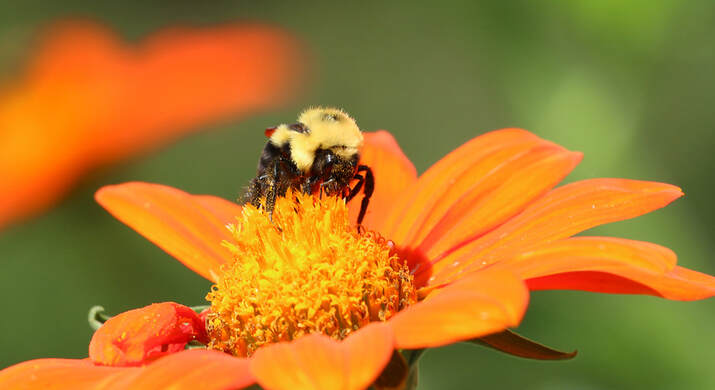
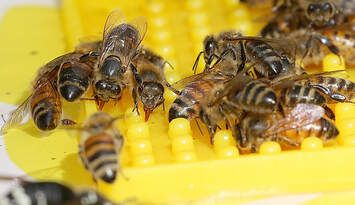
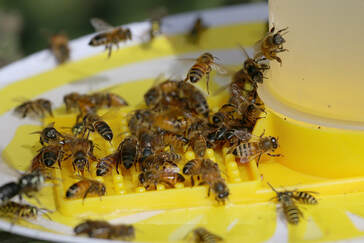

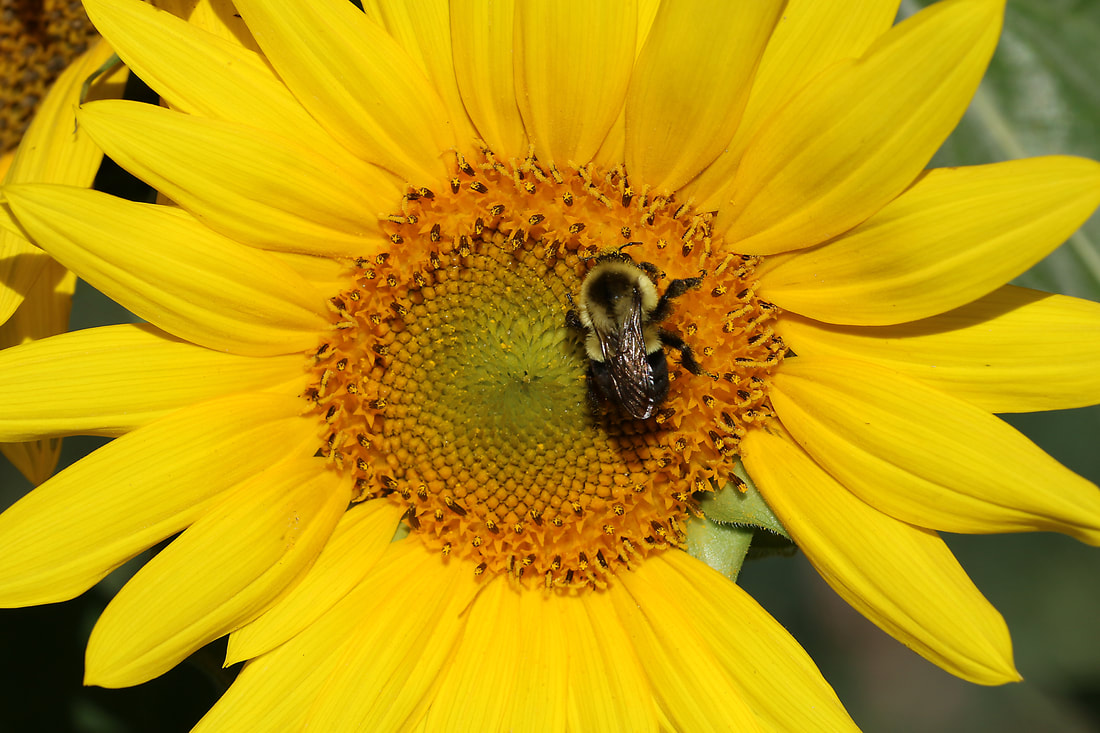
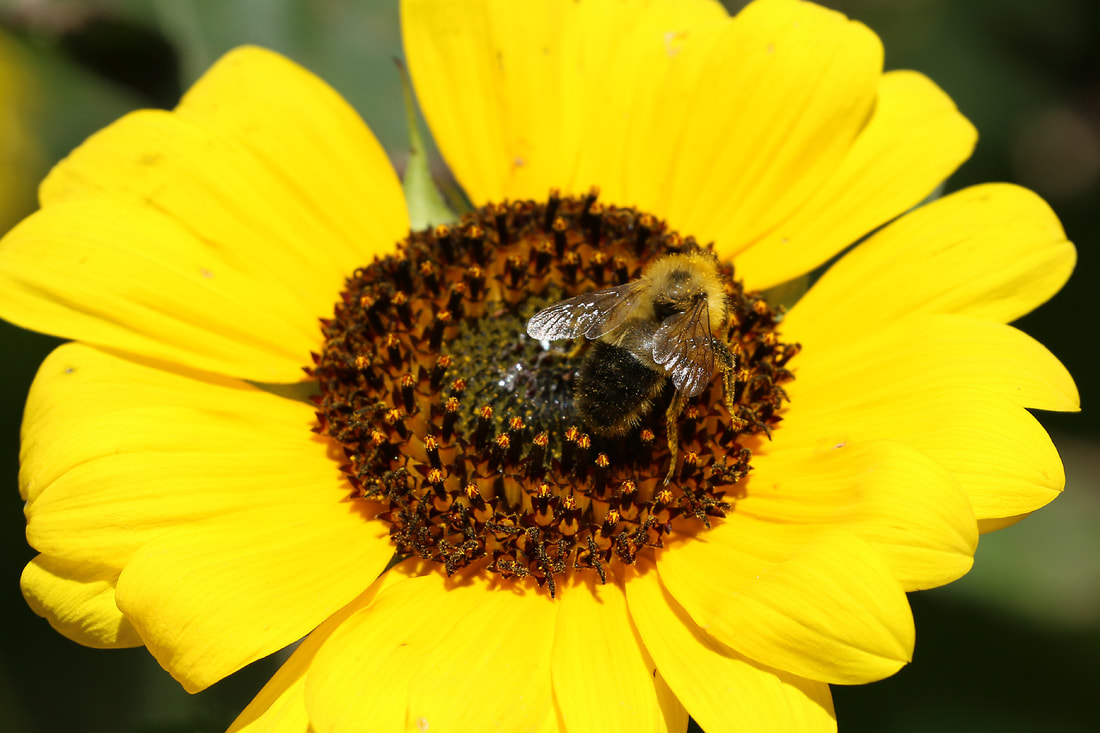
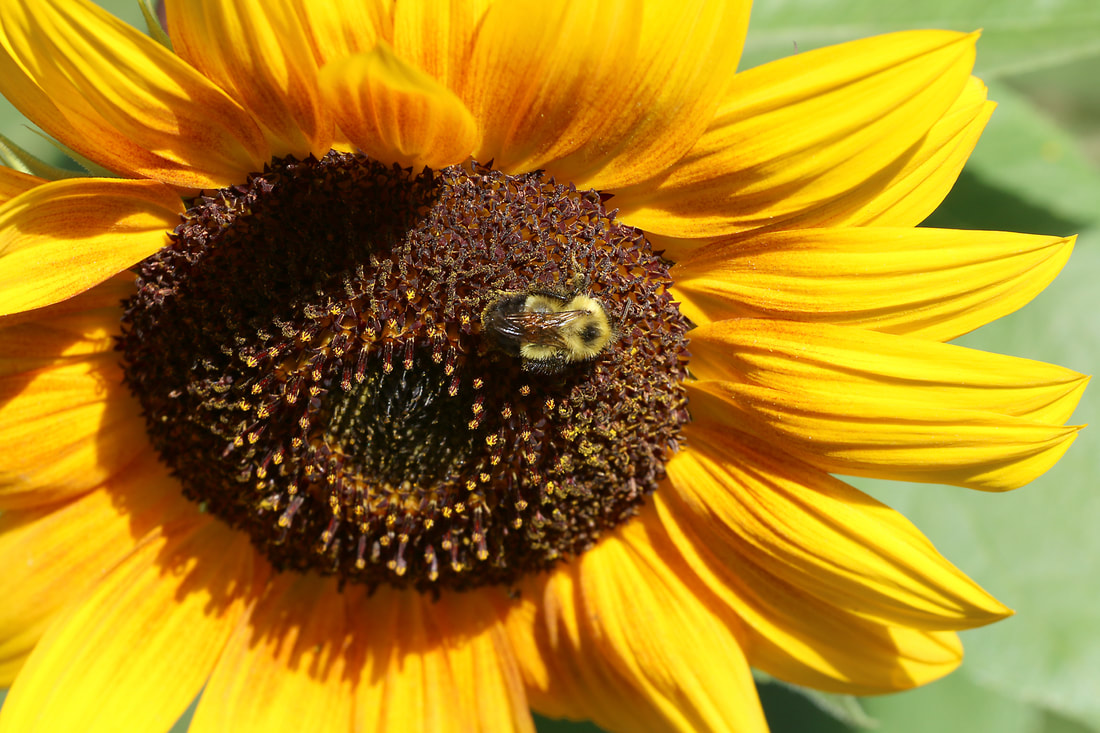
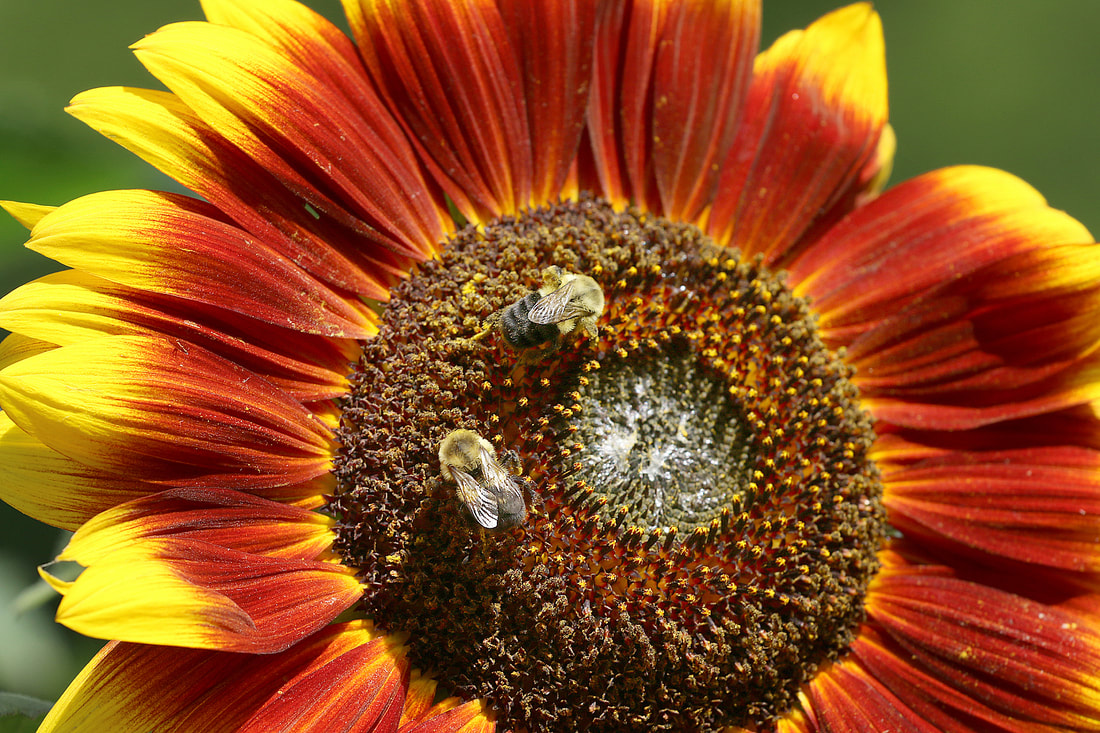

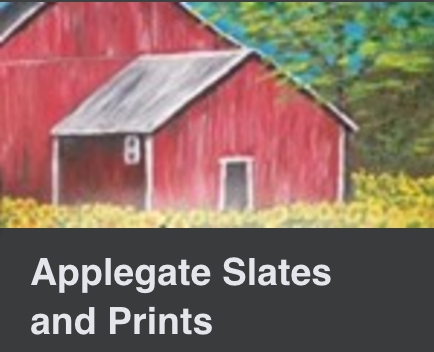



 RSS Feed
RSS Feed